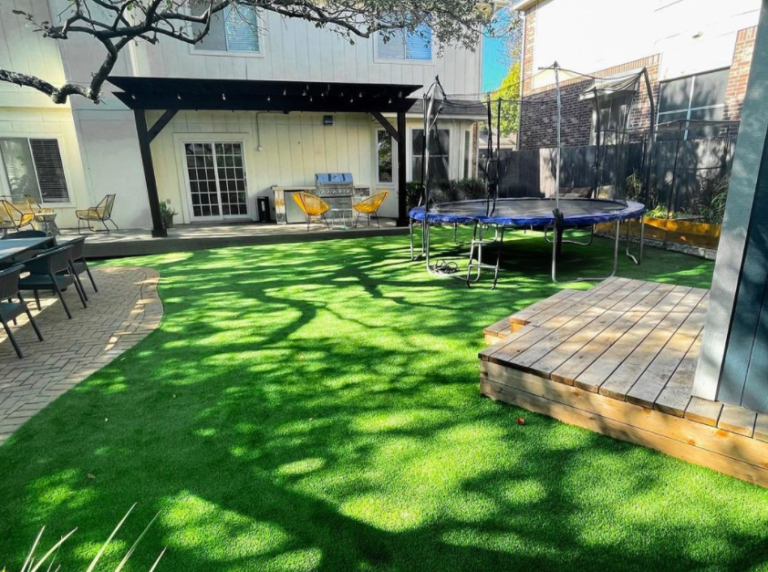In recent years, residential artificial grass has become an increasingly popular choice for homeowners looking to create beautiful, low-maintenance outdoor spaces. With its lush green appearance, durability, and versatility, artificial grass offers a range of benefits that can transform any yard into a vibrant and inviting oasis. In this comprehensive guide, we will explore the process of selecting and designing the perfect blend of residential artificial to create your dream yard.
1. Assessing Your Needs and Preferences
Table Of Contents
The first step in designing your dream yard with residential artificial is to assess your needs and preferences. Consider how you intend to use your outdoor space, whether it’s for relaxing, entertaining, playing with pets or children, or simply enjoying the beauty of nature. Take into account factors such as sunlight exposure, drainage patterns, and existing landscaping features to determine the ideal location and layout for your artificial grass installation.
2. Choosing the Right Type of Artificial Grass
Once you have assessed your needs, it’s time to choose the right type of artificial grass for your yard. Synthetic grass comes in a variety of colors, textures, and pile heights, so take the time to explore your options and select the one that best compliments your home’s architecture and landscaping style. Consider factors such as blade shape, density, and backing material to ensure that you choose a product that meets your aesthetic and performance requirements.
3. Customizing Your Design
One of the key advantages of residential artificial grass is its ability to be customized to fit your unique design vision. Whether you’re looking to create a lush, natural-looking lawn or a modern, minimalist landscape, artificial grass can be tailored to suit your preferences. Consider incorporating features such as pathways, flower beds, seating areas, or water features to enhance the visual appeal and functionality of your yard. Work with a professional landscape designer or installer to bring your vision to life and ensure that your artificial installation meets your specific needs and requirements.
4. Integrating Natural Elements
While artificial grass offers many benefits, it’s essential to strike the right balance between synthetic and natural elements in your yard design. Consider incorporating natural elements such as plants, trees, rocks, and hardscape features to add texture, depth, and visual interest to your landscape. Mixing artificial with natural materials can create a harmonious and inviting outdoor space that feels both comfortable and inviting.
5. Creating Functional Zones
To maximize the usability and enjoyment of your yard, consider creating functional zones that serve different purposes and activities. Divide your outdoor space into distinct areas for lounging, dining, playing, gardening, or entertaining to create a cohesive and well-organized layout. Use artificial grass to define and delineate these zones, whether it’s by installing separate patches or using different colors or textures to demarcate boundaries. By creating functional zones, you can make the most of your yard’s space and accommodate a variety of activities and lifestyles.
6. Enhancing Curb Appeal
In addition to enhancing your outdoor living space, residential artificial grass can also boost your home’s curb appeal and overall value. A well-designed and maintained yard with artificial grass can make a lasting impression on visitors and potential buyers, increasing the attractiveness and marketability of your property. Consider incorporating features such as landscape lighting, decorative edging, or outdoor furniture to enhance the visual appeal of your artificial grass installation and create a welcoming and inviting entrance to your home.
7. Considering Maintenance Requirements
One of the main advantages of residential artificial grass is its low maintenance requirements compared to natural grass lawns. However, it’s essential to consider the ongoing maintenance needs of your artificial grass installation to ensure its longevity and performance. While artificial grass requires minimal watering, mowing, and fertilizing, it still requires occasional cleaning and maintenance to keep it looking its best. Regularly remove debris, leaves, and pet waste, and rinse your artificial grass with water as needed to prevent odor buildup and maintain its appearance.
8. Investing in Quality Installation
Finally, investing in quality installation is essential to ensure the success and longevity of your residential artificial grass project. Work with a reputable landscape contractor or installer who has experience and expertise in artificial installation to ensure that your installation is done correctly and according to industry best practices. Proper site preparation, drainage, and installation techniques are critical to the performance and durability of your artificial , so don’t cut corners when it comes to installation.
Conclusion
Designing your dream yard with residential artificial offers endless possibilities for creating a beautiful, functional, and low-maintenance outdoor space that you can enjoy year-round. By assessing your needs and preferences, choosing the right type of artificial , customizing your design, integrating natural elements, creating functional zones, enhancing curb appeal, considering maintenance requirements, and investing in quality installation, you can create a landscape that reflects your style and personality while providing lasting value and enjoyment for years to come. With the perfect blend of creativity, planning, and attention to detail, you can transform your yard into a lush and inviting oasis that you’ll love coming home to.
